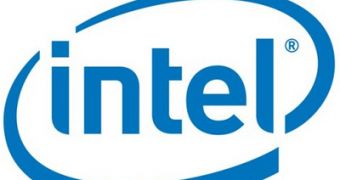The $1.25 billion that Intel Corporation will pay AMD, following the Antitrust settlement, seem to have drastically altered the budget and economical expectations of the Santa Clara-based enterprise. While AMD's stock shares jumped $1.16, or 22 percent, to close at $6.48 (because AMD will be able to pay off a large part of its $3.7 billion in debt), Intel's fell 16 cents, namely 0.8 percent, to close on Thursday at $19.68.
Coupled with the previous fines that Intel was forced to pay, following other lawsuits, both in the US and in Europe, the enterprise's budget was forcibly restructured. Intel and AMD will enter a five-year patent cross-license agreement and AMD will withdraw all accusations it made concerning unsavory deals on Intel's part. To that sum are added the $1.45 billion fined by the U.S. Federal Trade Commission, and the $18.6 million demanded by regulators in Korea. Intel could easily pay off these sums (out of its $28-billion profit), but, no longer being able to discourage manufacturers from using AMD inventions, the Californian company will have to preserve its place as number one through other, hopefully fair, means.
Although most marketing and financial expectations haven't changed, Intel now expects spending (R&D plus MG&A) in the fourth quarter to reach about $4.2 billion, up from $2.9 billion. In addition, the effective tax rate is foreseen at about 20 percent, down from 26 percent. This is based on a variety of factors, out of which the IT developer only revealed several it saw as more relevant to the issue.
Most of these factors are directly linked to demand. As it is a society entirely based on revenue, the company has to spend many resources in studying public preference and forecast expectations. This can lead to changes in inventory, business and economic conditions based on the customers' acceptance of products from Intel's competitors.
The industry on which Intel operates is characterized by a strong competition. This implies a high percentage of costs meant to deal with this pressure, costs that are calculated according to product demand that is highly variable and difficult to forecast. Not only that, but this financial revision came at a time when Intel was nearing the introduction of its new technology based on the 32nm process. This means that, in order to secure a high revenue, Intel will have to be especially concerned about the timing of the introduction and about that of the launch of other products from competitor developers.
These factors can alter revenue and revenue changes, in turn, determine the gross-margin percentage. This percentage is also affected by start-up costs, variations in inventory valuation, product pricing, product mixing, cost changes and impairments of assets. This means that the IT leader will have to pay attention to every aspect of its marketing strategy in order to reassert its hold over the 80% of the market it currently holds. This is specifically linked with the flash-drive industry, where a large part of Intel's non-marketable equity investment portfolio balance is concentrated. Unfavorable developments in this area may lead to impairment charges, which, in turn, would affect restructuring charges, as well as gains/losses on equity investments and interests and other.
Adverse economic, social, political and physical/infrastructure conditions in countries where Intel, its customers or its suppliers operate may also affect the company's overall economy, as any kind of risks would lead to currency fluctuations and infrastructure disruptions.
Lastly come the product defects and errata (deviations from published specifications), and by litigation or regulatory matters involving intellectual property, stockholder, consumer, antitrust and other issues. The litigations and regulatory matters described in Intel's SEC reports may affect Intel's rights for certain technologies. One example is the current litigation with NVIDIA, which, if won by the GPU manufacturer, will reduce the amount of technologies to which Intel currently has exclusive rights.
Intel's representatives may reiterate the Business outlook during private meetings with analysts, investors and the media through Nov. 25. After that, Intel will enter a 'Quiet Period,' during which the Outlook and the filing with the SEC should be considered historical, meaning only prior to the Quiet Period and not subject to any update by the company.

 14 DAY TRIAL //
14 DAY TRIAL //